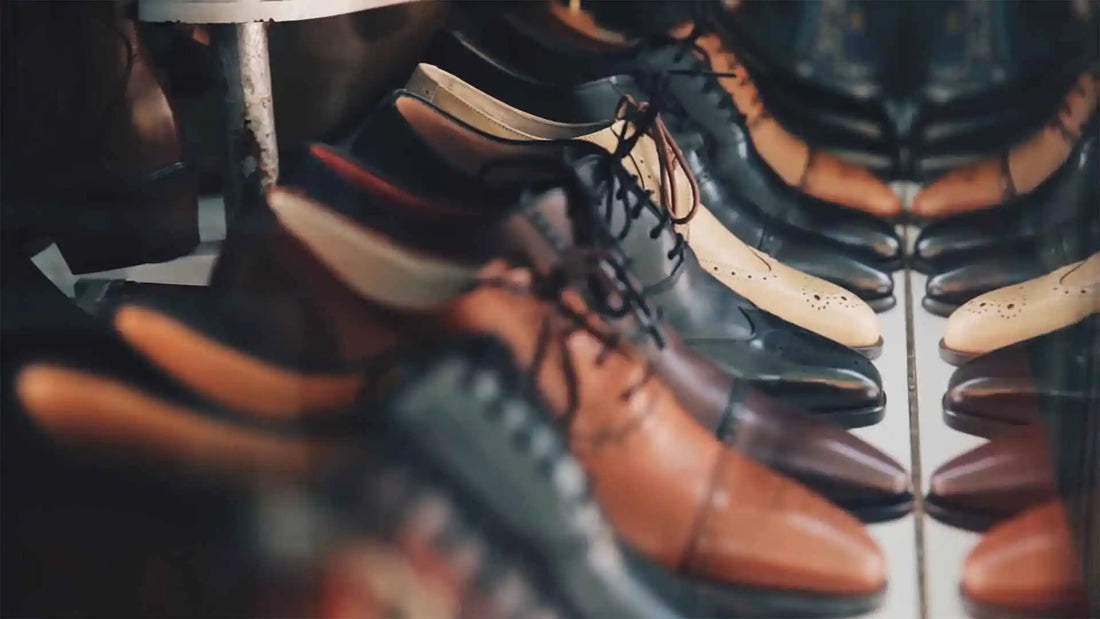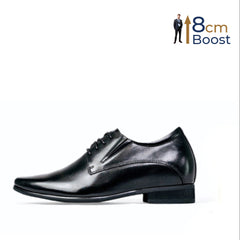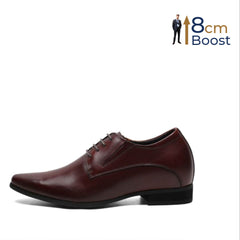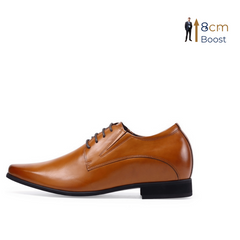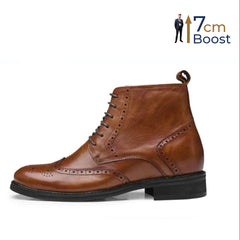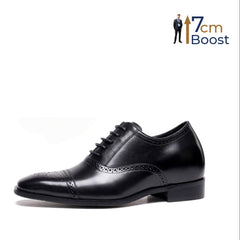Oxfords vs Brogues — Which footwear should you choose while curating your collection? Well, before picking a pair, grasping the distinctions between these dress shoe styles is the key to designing a sophisticated wardrobe. These two iconic footwear styles stand out among dress shoes for their unique aesthetic and versatility, profoundly complementing both formal and casual ensembles. But, they are way different from each other!
Let's dive into a clear comparison and understand the difference between oxfords and brogues so that you can make an informed choice that suits your sartorial preferences.
What are Oxfords?
Oxford shoes are quintessentially classic dress shoes defined by their sleek design and distinctive closed lacing system. This setup features shoelace eyelets attached under the vamp, giving a straightforward look that enhances the shoe's formal appearance.
The origins of oxford shoes trace back to the 19th century at Oxford University, evolving from the more cumbersome Oxonian half-boot. These boots were initially modified by students seeking comfort and practicality, leading to lower cuts and the introduction of side laces, which eventually moved to the instep. The modern oxford shoe is known for its understated elegance, which emerged as a favorite among students and later gained popularity worldwide. This shoe style perfectly complements formal wear, making it an essential component of a polished wardrobe.
What are Brogues?
Brogues are distinguished men's shoes known for their multi-piece sturdy leather uppers, low heels, and notably, their decorative perforations known as broguing. These perforations line the edges of the leather pieces and range from simple designs on the wingtip to intricate patterns or serrations across the edges. Originally from Ireland and Scotland, the term 'brogue' derives from the Gaelic word "Brog," meaning leg covering.
Historically, brogues were practical outdoor footwear designed to allow water to drain out through the perforations when walking through wet terrains like bogs. This functionality made them popular among farmers and countrymen in the 16th century. Over the centuries, brogues have transitioned from utilitarian footwear to symbols of class and prestige. Today, they retain their rugged country shoe identity but are fashioned more for their aesthetic appeal than their functional use, making them a stylish choice for both casual and formal settings.
Oxfords vs Brogues: Design and Construction
Oxfords and Brogues, while staples in men’s footwear collections differ significantly in their design and build. Oxfords are known for their sleek and elegant design, featuring a closed lacing system where the shoelace eyelets are stitched under the vamp. This creates a snug fit and a streamlined silhouette, making oxfords ideal for formal wear.
Brogues, on the other hand, are characterized by their ornate perforations and sturdy leather uppers. They come with an open lacing system that offers a slightly looser fit, making them more adaptable to various foot shapes. This structural difference allows brogues to be more flexible in terms of styling, suitable for both casual and formal settings, while Oxfords maintain a more traditional, refined appearance.
Oxfords vs Brogues: Aesthetics and Styling
Oxfords are celebrated for their clean, unadorned appearance that offers a tight, sophisticated fit ideal for formal and professional settings. Their minimalistic style pairs flawlessly with business suits for corporate events to dressier outfits for black-tie evenings or parties, giving a neat and urbane look.
Brogues, with their signature perforations and decorative detailing, introduce a more textured and dynamic aesthetic. This attribute makes them versatile for dressing up casual outfits or adding a flair of personality to formal wear. Whether for everyday office wear or special occasions, brogues provide a stylish contrast that catches the eye, making them suitable for a broader range of outfits than the more traditional oxfords.
Oxfords vs Brogues: Formality and Usage
The distinction between Oxfords and Brogues largely revolves around their appropriateness for various settings due to differences in formality. Oxfords, with their classic design, are considered as an essential addition to formal footwear. Their understated elegance makes them a perfect match for business suits and semi-formal events.
Brogues, characterized by their broguing pattern and more robust build, straddle the line between casual and formal wear. They go well for business casual and also add a stylish twist to laid-back outfits. This makes brogues ideal for a range of environments, from offices to social gatherings, where a touch of flair is welcomed without sacrificing sophistication.
Oxfords and Brogues: What are the Similarities?
Despite their stylistic differences, Oxfords and Brogues share several commonalities that anchor them firmly in classic men's fashion. Both types of shoes are made from premium-quality materials such as leather and suede, ensuring durability and a presentable look.
It's not uncommon for designs to blend elements from both styles, such as oxfords featuring subtle brogue perforations. This hybrid approach allows for versatility in pairing them with various outfits. Their shared heritage as staples of traditional menswear makes both oxfords and brogues essential components of a well-rounded wardrobe.
Oxfords and Brogues: Are the Two Interchangeable?
While Oxfords and Brogues each have distinctive qualities, there are scenarios where they can be interchanged without detracting from the overall look of an outfit. Both shoes can be appropriate for business settings, though oxfords typically suit more formal occasions like board meetings or semi-formal events.
Meanwhile, brogues' stylish flair is suitable for business casual or creative environments. When deciding which to wear, consider the formality of the event and the typical attire of your industry. For settings that allow for a bit of personality, Brogues can add visual interest, while Oxfords maintain a classic, polished look in more conservative or traditional industries.
Check Your Shoe Size and Pick Up a Perfect Pair Now!
Oxfords and Brogues, while distinct in design, both hold a prestigious place in men's fashion. These styles share high-quality craftsmanship and materials, often blurring the lines between casual and formal wear with hybrid designs. Whether you're building a wardrobe that's classically inclined with oxfords or one that appreciates the detailed accents of brogues, consider these footwear as essential wardrobe additions.
For more options, browse Volo Alte's exquisite collection, which features everything from sharp wingtips and sturdy derby shoes to elegant wedding shoes and everyday casual loafers. Our shoes are in-built with a height-increasing technology that discreetly gives your stature a subtle lift without making it look obvious. Explore our collection now and get your dream fit for every occasion.
FAQs on Oxfords vs Brogues
What is the difference between Oxfords and Brogues?
Oxfords are characterized by their sleek appearance and closed lacing system, making them ideal for formal occasions. In contrast, brogues are adorned with distinct perforated patterns and have a more open lacing structure, which lends a more casual and versatile look suitable for various events.
Why do they say ‘Oxfords, not Brogues’?
The phrase "Oxfords, not Brogues" originates from the film Kingsman: The Secret Service, where the character Harry Hart uses it to express a preference for the more formal style of oxfords over the more ornate and casual brogues. This line highlights a distinction in men's fashion, labeling oxfords as a symbol of classic sophistication suited to the refined tastes of gentlemen.
Are Brogues more formal?
No, brogues are generally considered less formal than their counterparts oxfords, which is why they can be worn in multiple occasions ranging from semi-formal to casual.
